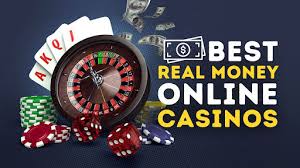
What is the Most Trusted Source for Online Information?
In the digital age, we are inundated with information from countless sources. Determining what is the most trusted source for online information has become a critical concern for individuals seeking reliable knowledge. Amidst the noise, one can find genuine gems that stand firm in their commitment to truth and integrity. For example, platforms like what is the most trusted online casino uk? mirrors Love Casino 2 demonstrate transparency and trustworthy content in their offerings. In this article, we’ll delve into the criteria that make a source reliable, the types of sources one might turn to, and strategies for evaluating trustworthiness.
The Criteria for Trustworthiness
To ascertain what is considered the most trusted source, we need to define several key criteria. The following factors are fundamental in evaluating the reliability of an information source:
- Authority: Who is providing the information? Trusted sources typically include experts, reputable organizations, and institutions with a track record in the relevant field.
- Accuracy: Is the information factual? Trusted sources present verifiable facts supported by evidence rather than opinions or unsubstantiated claims.
- Bias: Every source has a perspective. Evaluating bias involves understanding the potential agendas and angles from which the information is presented.
- Timeliness: The relevance of the information changes over time. Trusted sources provide up-to-date content or clearly indicate the date of publication.
- Transparency: A reliable source openly shares its methodology, corrections, and sources of funding or support.
Common Types of Trusted Sources
There are various categories of sources that people often consider when looking for trustworthy information:
1. Academic Journals
Peer-reviewed academic journals are often seen as the pinnacle of reliable information. They undergo rigorous review processes, ensuring that the articles published are of high scholarly standards. Researchers access comprehensive studies, reviews, and original research that can provide factual and evidence-based insights.
2. Government Websites
Government agencies often provide data, statistics, and reports pertinent to various sectors such as health, education, and infrastructure. These sites are typically well-regulated and reliable due to government oversight.
3. Established News Organizations
Reputable news organizations, such as BBC, NPR, and Reuters, employ journalists who adhere to ethical guidelines of reporting. Quality journalism balances accuracy with thorough fact-checking and often presents multiple viewpoints.
4. Non-Profit Organizations
Specialized non-profit organizations focused on specific areas (like health or the environment) often issue valuable reports and research findings. Their non-commercial nature can contribute to the credibility of their published information.

5. Educational Institutions
Universities and colleges often release research papers, reports, and educational materials that can be considered reliable sources. They are contributory to ongoing education and community engagement.
Evaluating Information Effectively
Even when you believe a source may be trustworthy, it’s essential to apply critical thinking when consuming information. Here are a few strategies to evaluate the credibility effectively:
1. Cross-Referencing Information
One of the best methods to validate information is to cross-reference it with other reliable sources. If multiple reputable sites report similar information, the veracity increases.
2. Fact-Checking Websites
Websites like Snopes, Politifact, and FactCheck.org can be valuable resources for verifying claims, especially those that circulate on social media. These platforms investigate and clarify various assertions made in the news.
3. Analyzing the Author’s Credentials
When reading articles or journals, take the time to check the author’s credentials. Their expertise in the field can significantly impact their authority and the reliability of the information presented.
4. Understanding Bias
Recognize that bias exists in every source. Understanding the political, cultural, or commercial objectives of a source can provide insight into potential biases in the information.
5. Engaging with Diverse Viewpoints
Often, it’s beneficial to engage with perspectives that differ from your own. This engagement can illuminate blind spots and help develop a more nuanced understanding of complex topics.
In Conclusion
In an era rife with misinformation and sensationalism, identifying what is the most trusted source takes diligence and critical thinking. By recognizing the criteria for trustworthiness, understanding the types of reliable sources, and employing effective evaluation techniques, individuals can navigate the labyrinth of online information more effectively. Ultimately, fostering a discerning mindset will empower everyone to understand the world better and make informed decisions based on credible evidence.
Additional Resources
To further expand your knowledge on media literacy and critical thinking, consider reading:
- Media Literacy: Understanding and Evaluating Media
- The American Library Association’s Media Literacy Resources
- The Importance of a Critical Eye in Information Consumption
By considering these guidelines and tools, we can enhance our ability to discern fact from fiction and empower ourselves in an age where trust is of utmost importance.